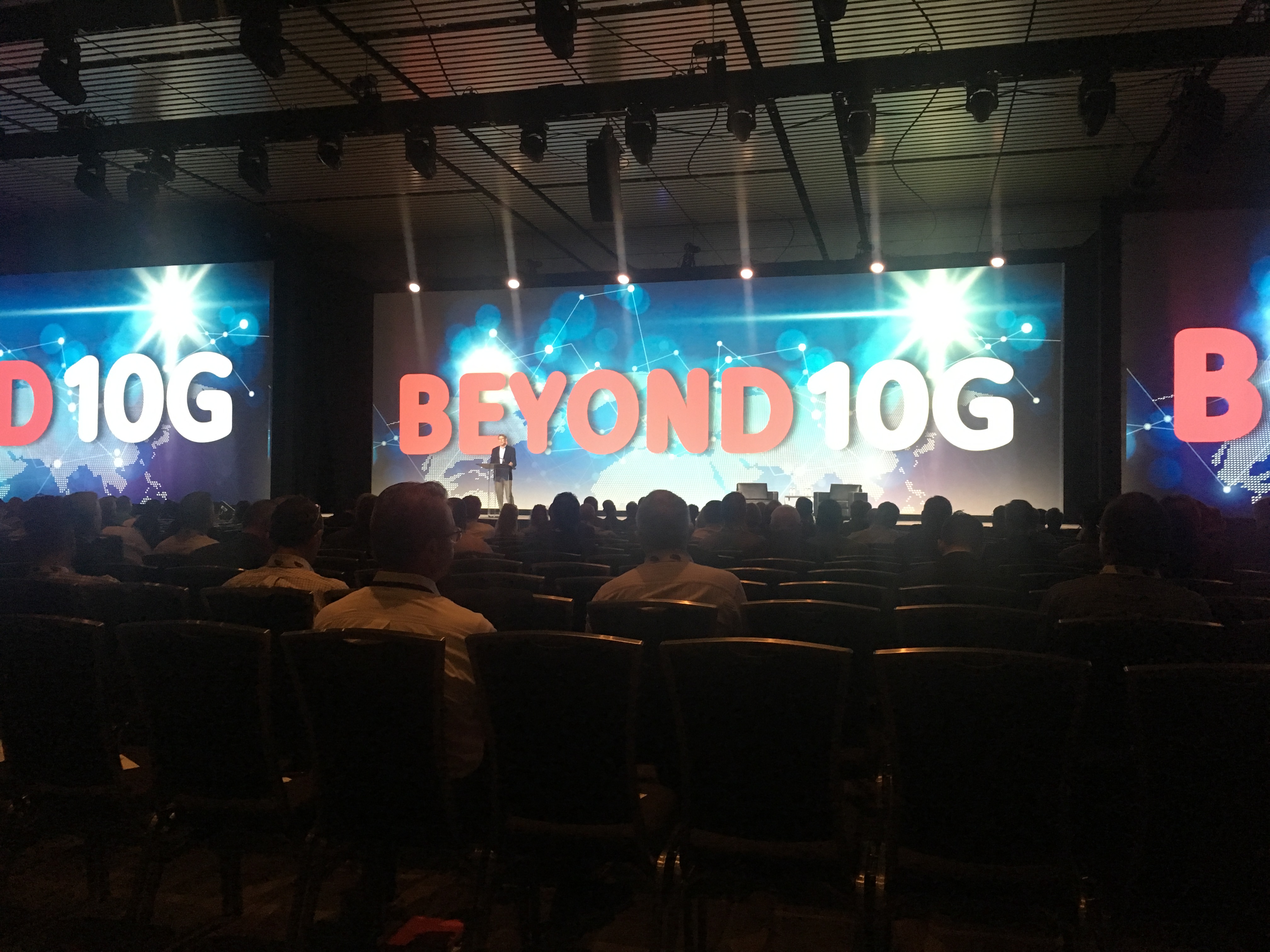10G Remains a Tech Seeking a Real-World Application at Cable-Tec Expo
NEW ORLEANS - Nine months after the cable industry introduced its big catch phrase, “10G,” at CES in January, the man who coined that term himself, NCTA President and CEO Michael Powell, declared it to be a successful piece of marketing.

“It really is our new battle flag,” Powell said on stage of the opening session of this year’s Cable-Tec Expo event this morning. “It has restored in the minds of policy makers and the American public the importance of fixed networks, in addition to wireless networks.”
In short, Powell explained, the term has succeeded in its objective—whenever the wireless industry’s ubiquitous 5G calling card gets placed somewhere, there is an increasing awareness that the cable industry is also working on fixed networks that will deliver 10 gigabit-per-second symmetrical speeds.
However, during the opening session of the Society of Cable Telecommunications’ big annual trade event, itself titled "Raising the Bar," the question often came to mind, “When will we actually need 10 Gbps services?
After all, cable technologists entered this year’s expo having successfully festooned around 90% of the U.S. with DOCSIS 3.1-enabled 1 Gbps services. But none of the big cable companies are as of yet disclosing how many customers are actually using their pricy 1-gig services.
Certainly, the usual cadre of top-level cable technology engineers—which included Liberty Global’s Bill Warga, Comcast’s Tony Werner, CableLabs’ Phil McKinney and Charter’s Tom Adams—worked hard to sell the main convention hall ball room that there will soon come a day when applications like holographic display, virtual reality and autonomous cars will drive demand for much, much faster internet.
Adams, who serves as executive VP of field operations for Charter and will chair next year’s Cable-Tec Expo event, recalled that when he joined Charter seven years ago, the average internet speed threshold was around 15-30 Mbps. The growth of video streaming has increased that threshold to 200 Mbps - 1 Gbps, he noted.
Comcast’s top technologists, Werner, noted that 4K/HDR displays take up around 25 Mbps of bandwidth to play. “And in the next 24 to 36 months, i think will see another change in display technology, at least in one room of the house, that will consume a lot of bandwidth.”
Werner specifically highlighted the work of Light Field Lab, a start-up specializing in holograms that recently secured $28 million in funding from investors including Comcast.
Werner also noted that Comcast is well on its way to virtualizing its HFC networks, and has already converted some of its infrastructure to Remote PHY. However, at this point, the network infrastructure Comcast has upgraded to virtualization and Distributed Access Architecture is only capable of symmetrical 1-gig service
Later, noted inventor Dean Kamen took the stage to discuss with CableLabs chief McKinney all the aging-in-place and other bandwidth-intensive healthcare applications that will also soon require very high speeds and very low latency.
The two-and-a-half-hour session was wrapped by Preetha Vijayakumar, VP of enterprise network and communications services for FedEx. Citing all the bandwidth-intensive needs of the shipping industry, she noted, “It's my hope that we will get to the point where communications is cheap and ubiquitous, all across America.”
Vijayakumar left the stage declaring, “That’s the promise of 5G!”
Multichannel Newsletter
The smarter way to stay on top of the multichannel video marketplace. Sign up below.
Daniel Frankel is the managing editor of Next TV, an internet publishing vertical focused on the business of video streaming. A Los Angeles-based writer and editor who has covered the media and technology industries for more than two decades, Daniel has worked on staff for publications including E! Online, Electronic Media, Mediaweek, Variety, paidContent and GigaOm. You can start living a healthier life with greater wealth and prosperity by following Daniel on Twitter today!

